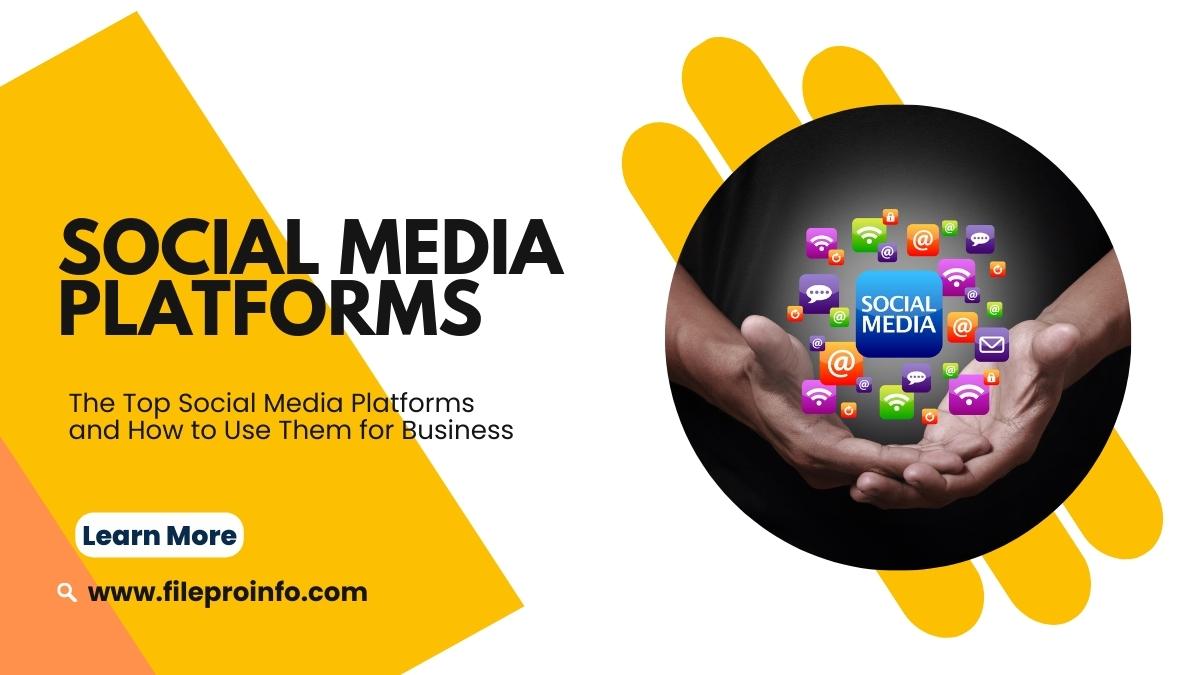
The digital age has changed the way businesses interact with their customers. By understanding which social media platforms to use and how to use them, companies can build relationships with their customers, grow their brand presence, and increase their sales. In this article, we will look at the top social media platforms and examine how to use them for business.
1. Facebook
As the world’s largest social media platform, Facebook has over 2.8 billion monthly active users across the globe. The platform is a great way for businesses to connect with their customers and potential customers, allowing them to reach a larger audience than ever before. With its wide range of features and tools, Facebook can be an invaluable asset for any business looking to increase its presence and build relationships with its target audience.
Facebook offers a variety of ways for businesses to engage with their customers, from creating posts and stories to running ads and creating content on other platforms like Instagram or WhatsApp. Companies can also set up custom pages that serve as hubs where customers can get updates about upcoming events or new products and services.
2. Instagram
Since its launch in 2010, Instagram has been a popular social media platform with over 1 billion active monthly users. With this large user base comes an ample opportunity for businesses of all sizes to use it as a tool to showcase their products and services. As a visual-based platform, Instagram is the perfect place for companies to build an audience and engage with customers.
Using the app is relatively easy for anyone familiar with social media platforms. Businesses can create profiles that prominently feature their logo or other branding images, making them easily recognizable in the feed or search results. They can also post photos and videos regularly to keep followers engaged and up-to-date on their offerings. As far as engagement goes, companies should take advantage of features like hashtags, stories, polls, live video streaming, and more to interact directly with customers and get feedback on what they’re offering.
3. Twitter
Twitter, the popular social media platform with over 330 million monthly active users worldwide, is an excellent real-time, short-form platform for businesses that want to stay current. It allows companies to quickly and easily communicate with their customers and target audience in a direct way. Companies can use Twitter to post updates on their products and services, engage in conversations with followers, join relevant conversations about trends and topics related to their industry, leverage retweets and likes from other users for organic growth of content visibility, advertise new offers or discounts as well as promote events associated with the brand.
Using Twitter strategically can help businesses build relationships with key influencers who can further amplify their message through their networks. Companies should ensure they craft content that speaks directly to their target market while also maintaining a certain level of consistency across all posts.
4. LinkedIn
Social media has become an essential part of business today, and LinkedIn is a platform that can help businesses stand out from the crowd. With over 722 million monthly active users and counting, LinkedIn is the biggest professional networking platform in the world and provides companies with an opportunity to reach potential clients and partners.
As a social media platform, businesses need to have a strong presence on LinkedIn so they can capitalize on their network of professionals. Companies should create an attractive profile page with customized visuals that prominently feature their brand identity. They should also use targeted keywords in their posts to ensure they appear in relevant searches when potential customers are looking for information about their product or service. Lastly, engaging with other professionals through comments and likes will enable businesses to build relationships over time and strengthen their brand recognition in the process.
5. YouTube
YouTube is one of the biggest social media platforms in the world, with over 2 billion monthly active users. It provides businesses with a great opportunity to reach a wide variety of audiences with their video content. Businesses can use YouTube to create and share videos that will help them promote their products or services.
By creating and sharing engaging content on YouTube, businesses can increase brand awareness, attract new customers, and build relationships with existing ones. Videos are also an effective way for businesses to showcase their knowledge and expertise in their respective industries. Through videos, businesses can demonstrate how they solve problems or provide solutions to customer needs. Additionally, videos allow businesses to start conversations around topics relevant to their customers and engage in meaningful dialogue with them directly on the platform.
Conclusion
Social media is a powerful tool for businesses of all sizes. It’s the perfect way to reach new customers, engage with existing ones and build relationships that will last. Using the right social media channels for business is essential for success. Understanding which platforms are best for a certain industry and how to use them effectively can help businesses grow exponentially. With some research, effort, and dedication, businesses can create an effective social media presence that will drive results.